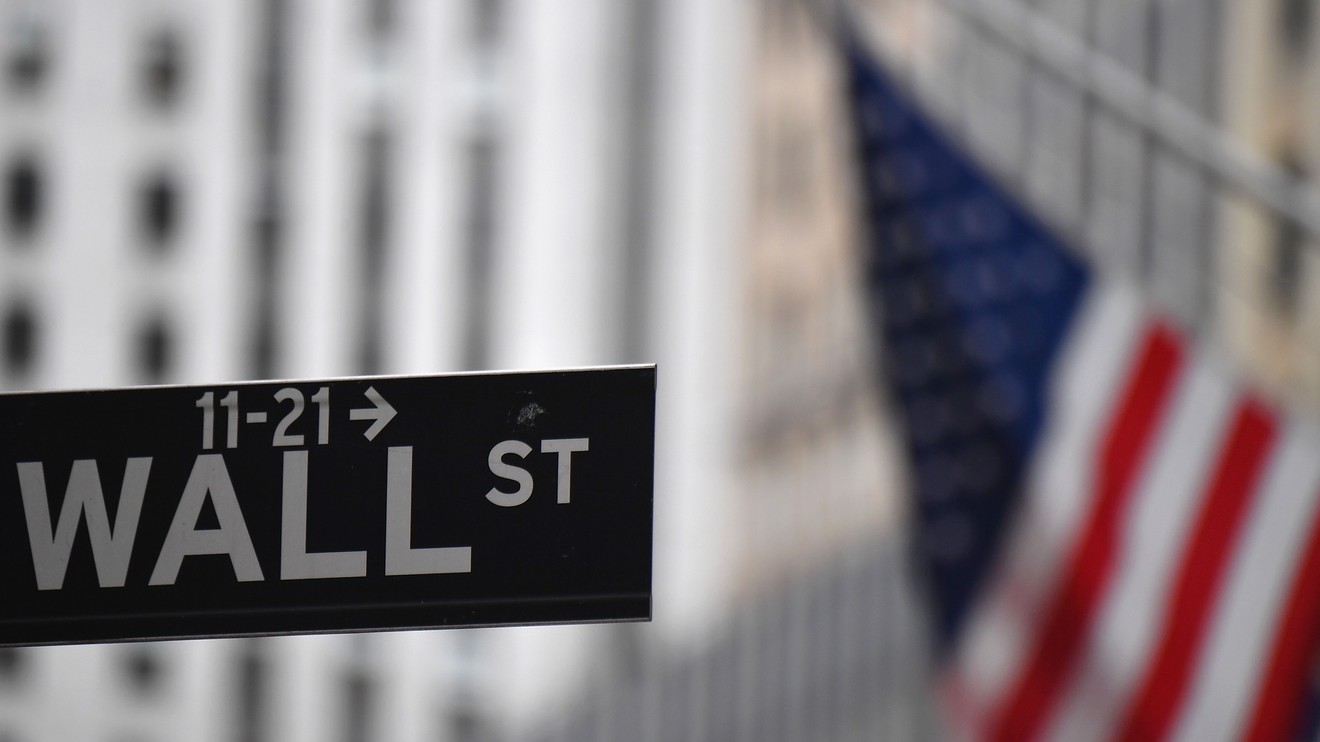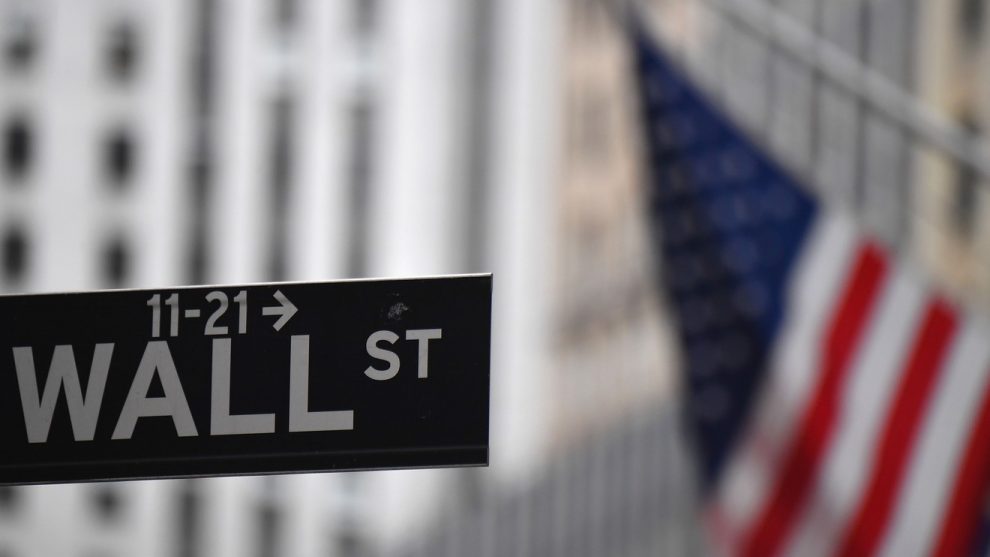
U.S. technology stocks led another fall on Wall Street on Tuesday, after the broader market broke a five week winning streak before Labor Day weekend as investors worried about stretched valuations.
Remarks by President Donald Trump on Monday, threatening to “decouple” the U.S. economy from China added to market jitters, analysts said.
What are major indexes doing?
The Dow Jones Industrial Average DJIA, -2.05% dropped 613 points, or 2.2%, to 27,522, while the S&P 500 SPX, -2.53% gave up 90 points, or 2.6%, to trade at 3,337. The Nasdaq Composite COMP, -3.66% was off 420 points, or 3.7%, at 10,892.
The tech-heavy Nasdaq Composite dropped 3.3% last week to end Friday at 11,313.13, its biggest weekly decline since March. The Dow Jones Industrial Average lost 1.8% last week, ending at 28,133.31, while the S&P 500 dropped 2.3% to 3,426.96 — the biggest weekly falls for those indexes since June.
What’s driving the market?
The major U.S. stock indexes fell sharply Tuesday, with the Nasdaq bearing the brunt, putting the technology-heavy index on pace for a more than 6.3% drop over the past five trading days, and on track for its worst September start on record.
The current record for the Nasdaq’s worst, first five days of September was its 6.1% fall in September 2001, according to Dow Jones Market Data.
Read:Tech-stock rout stirs memories of 1999-2000, but here’s what’s different
The reversal for the Nasdaq, which had previously soared to a series of all-time highs, was led by falls for its highest-flying components, including Apple Inc. AAPL, -5.83%, Facebook Inc. FB, -3.85%, Microsoft Corp. MSFT, -4.64% and Amazon.com Inc. AMZN, -4.14% and Google parent Alphabet Inc. GOOG, -3.48% GOOGL, -3.47% as worries grew that the momentum-led gains for the sector had finally pushed valuations too far to be sustained.
One thing to watch will be if major U.S. equity indexes can manage to rally without the tech giants, given their bulkier footprint in a stay-at-home, pandemic world, said Clifton Hill, a portfolio manager for Acadian Asset Management’s multi-asset class strategies group, in an interview with MarketWatch.
Hill also said he’ll be watching to see whether money fleeing tech stockss rotates into “value equities and others that had not done as well,” while also monitoring developments on the “Nasdaq whale” front, after the Financial Times unmasked SoftBank on Friday as having amassed billions worth of equity derivatives in recent months that helped fuel the sharp ascent for big tech stocks.
Remarks by Trump in a Labor Day news conference also left stocks under pressure, analysts said.
“We will make America into the manufacturing superpower of the world and we’ll end reliance on China once and for all, whether it’s decoupling or putting in massive tariffs like I’ve been doing already. We’re going to end our reliance on China, because we can’t rely on China,” Trump said.
“Decoupling implies that only domestic companies can serve domestic customers,” Mark Haefele, chief investment officer at UBS Global Wealth Management, wrote in a note Tuesday. But his team also outlined several reasons why the post-COVID-19 world already was poised “to be less global and more digital” anyway, as production is brought closer to home and driven to adopt more technology and automation in the process.
Meanwhile, China on Tuesday said it would launch an initiative of its own to set global standards on data security, a move seen as an attempt to counter U.S. efforts to isolate their networks from Chinese technology.
Trump’s comments “clearly rattled the markets, which fear an escalation of tensions between the two economic superpowers as the U.S. nears its election,” said Boris Schlossberg, managing director of FX strategy at BK Asset Management, in a note. “The increasing conflict could hurt the U.S. high tech sector the most with China already stating that it will try to create its own chip design and manufacturing business as it tries to rely less on the U.S. technological know-how.”
In coronavirus pandemic news, a group of nine drug company chief executives said that they have signed a pledge to make the safety and well-being of vaccinated individuals the priority in developing the first COVID-19 vaccine.
Related: There are seven coronavirus vaccine candidates being tested in the U.S. — here’s where they stand
Which companies are in focus?
- Shares of Tesla Inc. TSLA, -19.11% fell more than 18% after a rebalancing of the S&P 500 by S&P Dow Jones Indices on Friday unexpectedly left the electric-vehicle maker out of the U.S. stock-market benchmark.
- The rebalancing saw Catalent Inc. CTLT, -0.69%, Etsy Inc. ETSY, -1.06% and Teradyne Inc. TER, -3.72% added to the index.
- Shares of Nikola Corp. NKLA, +39.77% soared 41% after the alternative-fuel vehicle maker and General Motors Co. announced they had entered a strategic partnership that would start with the Nikola Badger, the company’s planned fully-electric and hydrogen-fuel cell electric pickup truck, and include cost reductions for other models. GM shares were up 8.7%.
- Shares of Boeing Co. BA, -5.31% were down more than 5% after the Wall Street Journal reported that production problems at a 787 Dreamliner factory prompted air-safety regulators to review quality-control lapses that could stretch back almost a decade.
- Peloton Interactive Inc. shares PTON, +5.47% were up more than 8% after the company said it had lowered the price of its original exercise bike Monday while introducing a premium option and rolling out a new lower-priced treadmill.
- Roku Inc. ROKU, +1.15% shares rose 2% after Wells Fargo analyst Steven Cahall began coverage of the stock with an overweight rating, an $215 price target and called the company an “advertising heavyweight in the making.”
- Chip-equipment stocks Applied Materials Inc. AMAT, -8.39%, KLA Corp. KLAC, -9.51% and Lam Research Corp. LRCX, -8.23% were each off more than 8% Tuesday amid reports that the U.S. is considering putting export restrictions on Chinese chipmaker Semiconductor Manufacturing International Corp.
How are other markets trading?
The yield on the 10-year Treasury note TMUBMUSD10Y, 0.680% TMUBMUSD10Y, 0.680% fell 4 basis points to 0.68% as investors prepared for a heavy week of supply. Bond prices move inversely to yields.
The ICE U.S. Dollar Index DXY, +0.80%, which tracks the performance of the greenback against its major rivals, was up 0.8%.
Gold futures GCZ20, +0.15% gained 0.5% to settle at $1,943.20 an ounce. U.S. crude oil benchmark futures CL.1, -6.86% fell sharply, finishing more than 7.6% lower, while global benchmark Brent crude BRN.1, +0.65% traded below $40 a barrel for the first time since June on continued worries over the outlook for demand.
The Stoxx Europe 600 index SXXP, -1.14% closed 1.2% lower, losing steam as U.S. equities fell, while the U.K.’s benchmark FTSE UKX, -0.77% shed 0.1%. In Asia, Hong Kong’s Hang Seng Index HSI, +0.14% rose 0.1%, while Japan’s Nikkei NIK, +0.79% rose 0.8%.











Add Comment